Top 10 Purple Plants to Grow in Your Flower Garden
Updated: Nov. 15, 2023
Add purple plants to your yard and enjoy the bold, colorful blooms all season long. We found purple flowering plants for every garden.
Whenever I’m planning a new garden, no matter what mood I’m trying to create, I always include some purple plants. I look for a variety of purple flowering plants including bushes and shrubs, plants for pollinators and spring-flowering bulbs. Here’s our top 10 favorite purple blooms that will fill your yard with color.
Grow pretty purple fountain grass for birds.
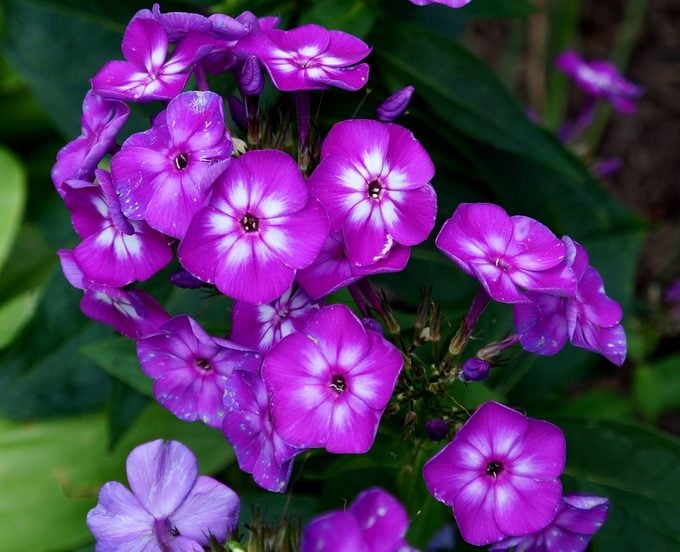
Verbena
Verbena, zones 9 to 11, annual elsewhere
You can expect summer-long color from these beautiful blooms. These full-sun purple plants sport attractive clusters of flowers and grow to about 18 inches high. Keep the soil moist but well drained; dry conditions can hinder flowering.
Top picks: Both V. bonariensis and the Imagination cultivar blossom in joyous shades that run between magenta and violet.
Butterflies and hummingbirds love tall verbena.
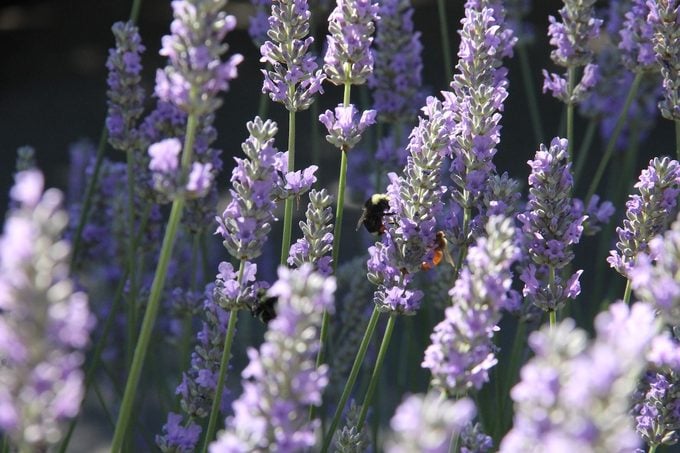
Lavender
Lavandula, Zones 5 to 10
Lavender’s not just beautiful; its powerful scent does wonders to alleviate stress. The silvery-gray purple flowering plant grows from 1 to 4 feet tall in full sun and boasts graceful spires of tiny blooms. And lavender also repels mosquitoes but bees love it.
Top picks: For particularly showy purple flowers, choose Hidcote Superior, Sarah or Munstead.
Discover essential facts about lavender plants.
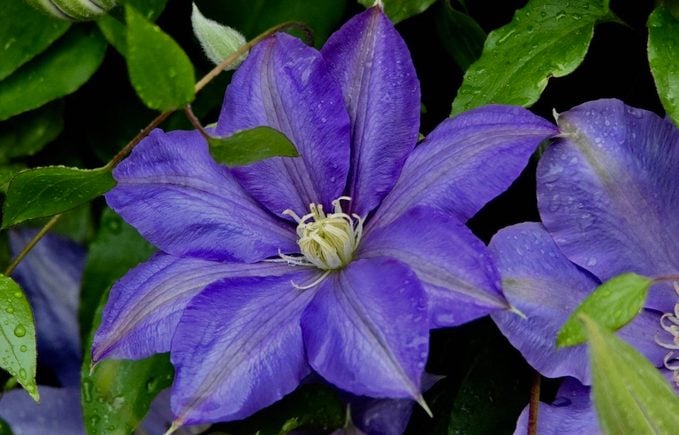
Clematis
Clematis spp., Zones 3 to 9
You say “CLEM-uh-tiss,” I say “cluh-MAT-iss”: However you pronounce it, this is one dazzling vine with purple flowers. Some grow up to 30 feet tall, it provides more flowers in less space than almost anything you’ll find. Plant in a sunny, sheltered spot on a trellis or fence and watch it thrive.
Top picks: The classic Jackmanii springs to mind instantly, but Arabella is all that plus multitones of blue and mauve.
Psst—we found even more purple perennials to plant for beauty each year.
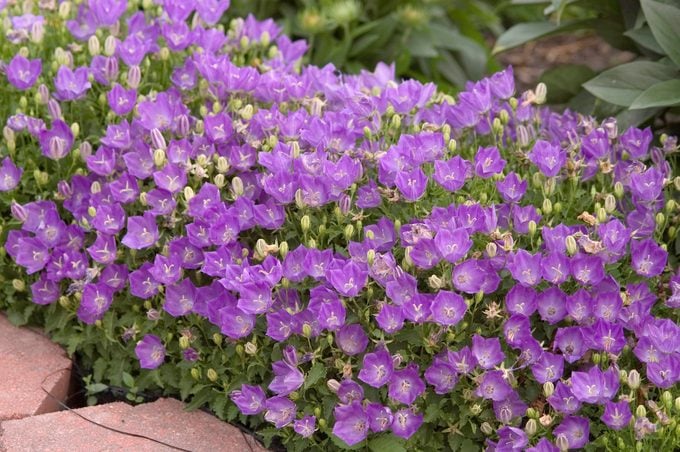
Bellflower
Campanula spp., Zones 3 to 9
If you want a ground cover with purple flowers, try bellflower. In addition to perennials, the bellflower family includes annuals and biennials, all with graceful blossoms lasting from late spring into summer. Although it also enjoys full sun, planting in partial shade preserves its delicate colors. Keep bellflowers happy by watering regularly.
Top picks: Try Birch Hybrid or Bavarian Blue for charming storybook shades.
Check out these beautiful blue flowers for every garden.
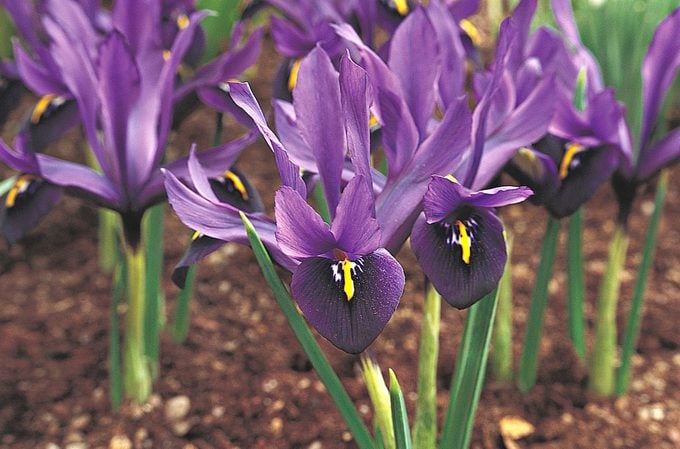
Dwarf Iris
Iris reticulata, Zones 4 to 9
This fragrant, petite early bloomer grows from just 2 to 12 inches high. The vibrant, small purple flowers, which do best in full sun, emerge in late winter to early spring. Learn more about growing iris flowers.
Top picks: The dark, rich petals of J.S. Dijit unfurl to offer spring a royal welcome.
For more early blooming purple bulbs, check out our tips for growing crocus flowers.
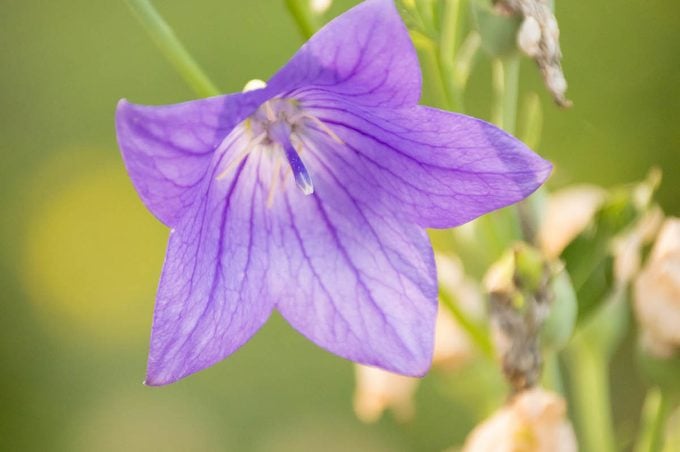
Balloon Flower
Before opening into five-pointed blooms, the hollow buds look like tiny balloons. Balloon flower does best in full sun or partial shade and thrives in moist, well-draining soil.
Top picks: Astra blue and Fuji blue varieties display charming pale blue-violet flowers.
Find out what to do if your lilac bush is not blooming.
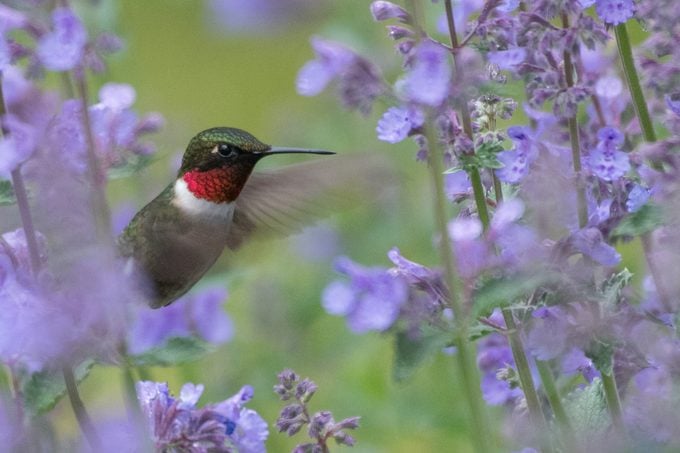
Catmint
Nepeta, Zones 3 to 8
Easy to grow, catmint provides silvery-green or gray foliage and a long season of blooms that hummingbirds love. The purple flower spikes reach about 2 feet tall and enjoy full sun. Many hybrid catmints are sterile, so they don’t seed. Divide plants in spring or take cuttings in summer.
Top picks: For fun, the classic cultivar Nepeta x faassenii can’t be beat. For an alpine ambience, give N. sibirica a shot.
We asked the experts: will a catmint plant attract cats to the garden?
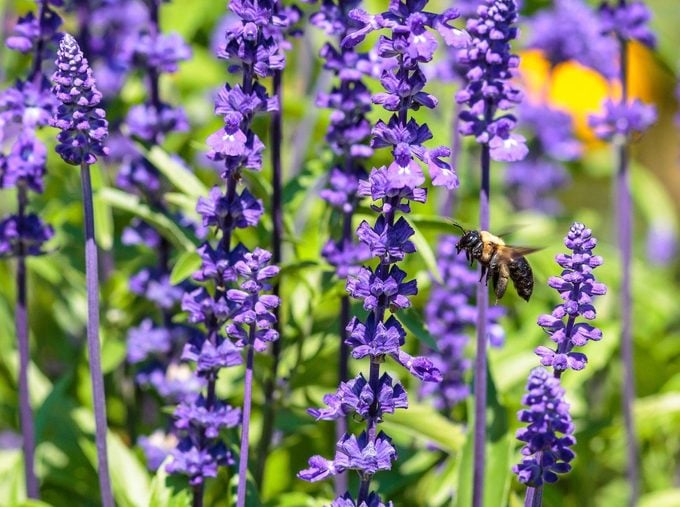
Salvia
Salvia spp., Zones 4 to 9, Annual elsewhere
Count on this attention getter for color all season in any landscape. Its 8- to 30-inch-tall plumes teem with tubular purple flowers that attract hummingbirds. Though it’s generally partial to full sun, this resilient plant will thrive in partial shade during hot summers.
Top picks: The Evolution and May Night cultivars offer intense, dramatic purple hues. For blueish flowers, look for Playin’ the Blues salvia.
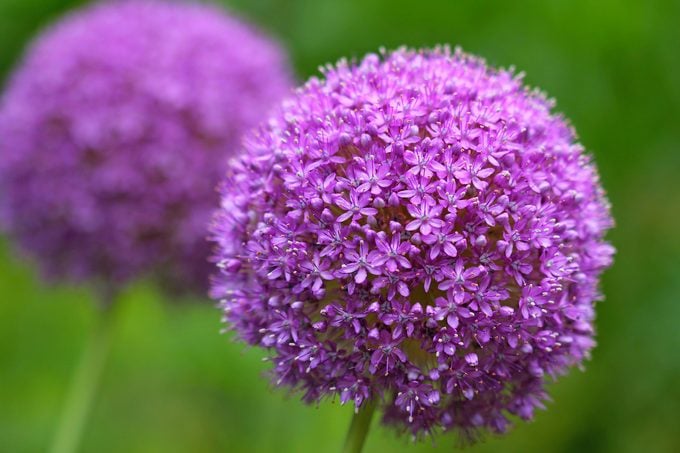
Allium
Allium spp., Zones 3 to 9
If you want to add brightness and bounce, there’s no better bloomer than allium. This pretty perennial is a winning selection for most backyards. Not only can you find an allium to suit almost any spot, it’s easy to grow, and you can find different types that will bloom from late spring to fall. Check out more of the biggest blooms for your flower garden.
Top picks: Try A. aflatunense for a sassy taste of purplish pink or Globemaster if you prefer bluish purple flowers.
Check out the top 10 prettiest pink perennial flowers to grow.
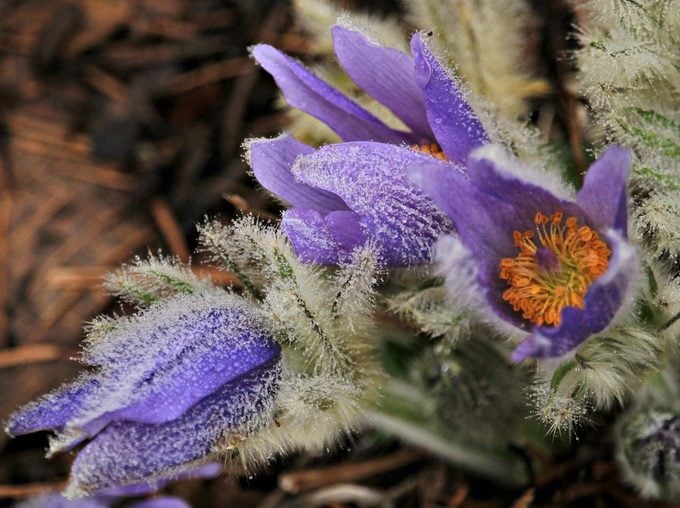
Pasque Flower
Pulsatilla, Zones 4 to 8
An early-spring bloomer, pretty pasque flower adds texture to any garden. While it’s not a go-to perennial for most gardeners, this sun-loving, drought-tolerant, fuss-free purple flower certainly deserves top honors on our list.
Top picks: P. vulgaris offers an enchanting mauve, while the silvery overtones of P. halleri add an icy, textured charm.
For late-season purple flowering plants, read our complete aster flower growing guide.
